A.I.L.A – Review
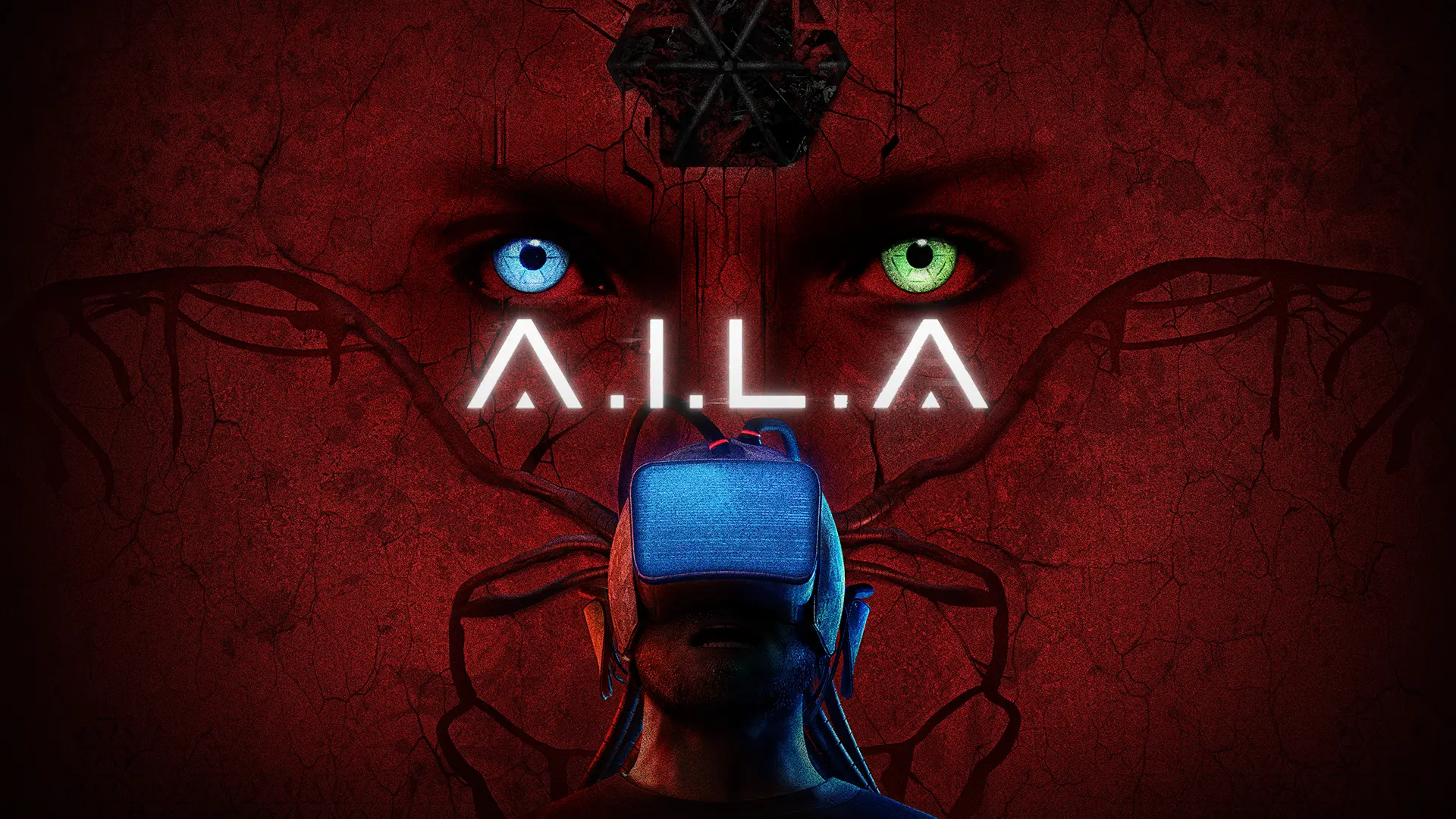
Disclaimer: I received a free review key for A.I.L.A from the publisher. This does not affect my opinions, all thoughts and impressions in this review are my own. A.I.L.A is not a typical survival horror experience, and the developers are upfront about that. The Steam description makes it clear that the game blends multiple horror subgenres, including survival horror, psychological horror, and action horror. It draws from all corners of the horror genre to create something that feels familiar yet unpredictable. Fans of Resident Evil will immediately notice the countless references hidden throughout its levels. However, it is not just Easter eggs. A.I.L.A also borrows from the core gameplay loop of Resident Evil and Alone in the Dark: explore, solve puzzles, fight, repeat. The hub-and-spoke level design reinforces that classic structure, while the constant shifts in tone and setting keep it from feeling derivative. There is plenty of variety too, with environments ranging from a derelict farmhouse to a pirate’s ghost ship, each offering a distinct atmosphere that prevents the experience from becoming stale. If you’d rather see A.I.L.A in action, watch the video version of this review below! If you are here to find out whether A.I.L.A is worth playing, let me save you some time: Yes! I went in with no expectations, having never played Pulsatrix Studios’ earlier title Fobia – St. Dinfna Hotel. Although it took a little time for the game to grow on me, once it did, I could not put it down. In the end, A.I.L.A worked for me because it delivered a completely different kind of horror experience that I did not realise I was missing. The Meta World of A.I.L.A In A.I.L.A, you step into the role of Samuel, a beta tester for a VR project that shares the same title. The experience often felt surreal to me, as I was reviewing a game built around the idea of reviewing a game. Even the process of installing the in-game system is carried out manually, and this idea becomes much more intricate during a later puzzle, the whole game is very meta. Your main hub area is Samuel’s apartment, which might sound like an unexciting location, but there is always something new happening. The space is detailed and changes a lot through the game. The apartment sequences reminded me of Silent Hill 4: The Room, as well as the film 1408, with their sense of being trapped in a room you can’t escape. A large part of the game’s appeal comes from never knowing where you will end up next. Each scenario is set in a different location or time period, and the shifts are dramatic enough that you can never be certain what might be waiting behind the next door. The Many Doors of A.I.L.A There is something iconic about the door animations in the early Resident Evil games, which is why our logo features a red door. You never quite knew what was waiting on the other side which added to the tension that defined classic survival horror. In many ways, A.I.L.A could almost be described as a door-opening simulator, although I am fairly sure that is not an actual genre. In the early Resident Evil titles, the loading screens created a real sense of anticipation, and Pulsatrix Studios has taken that concept and reimagined it in a modern way. In the first area, for example, you must navigate a maze of countless doors, never knowing what you will step into next. Rooms can change after you leave them, and sometimes even the moment you turn your back, objects shift or rearrange themselves, keeping you constantly on edge. Mannequins and other objects shift whenever you turn your back on them, creating a constant sense of uncertainty. Not knowing what might be behind you, or what might be waiting through the next door, is when the horror is at its strongest. These moments work because the unknown is always more frightening than what is in front of you. In a later level, you find yourself in a Resident Evil 7 style farmhouse, fighting aliens. These encounters lean far more towards action horror than psychological horror. The change of pace does help to keep things lively, but the alien enemies are among the weakest enemies in the game (there are much better enemy types later). They are more irritating than frightening, and once the action takes over, some of the tension disappears. When you understand exactly what you are dealing with, the fear of the unknown is lost. Although I was not a fan of the alien enemies, I did enjoy the level itself, particularly the visuals of the farmhouse. In fact, the graphical presentation throughout the entire game is impressive, although I will touch more on that later. What made the farmhouse especially engaging was its puzzles. The whole location feels like a large, interconnected puzzle box waiting to be solved, and that sense of discovery is what kept me playing. Puzzle Solving A large portion of your time will be spent solving puzzles, and for me they are pitched at just the right level of difficulty. They are not so easy that they become dull, yet not so challenging that you feel the need to look up the solutions online. There were moments when I was close to giving up, but whenever I stopped and searched a little longer, the clue I needed was usually nearby and often in the very room I was standing in. If you approach the game in the same way you would an early Resident Evil title, you will be fine. By that I mean you should search everything and read every clue. Searching highly detailed environments is one of the reasons I love survival horror games. I recently reviewed Tormented Souls 2, and one of my favourite aspects of that game was exploring its environments. However, when you explore in third-person with a fixed camera that is quite far back, it can be difficult
Greek Tragedy – Review
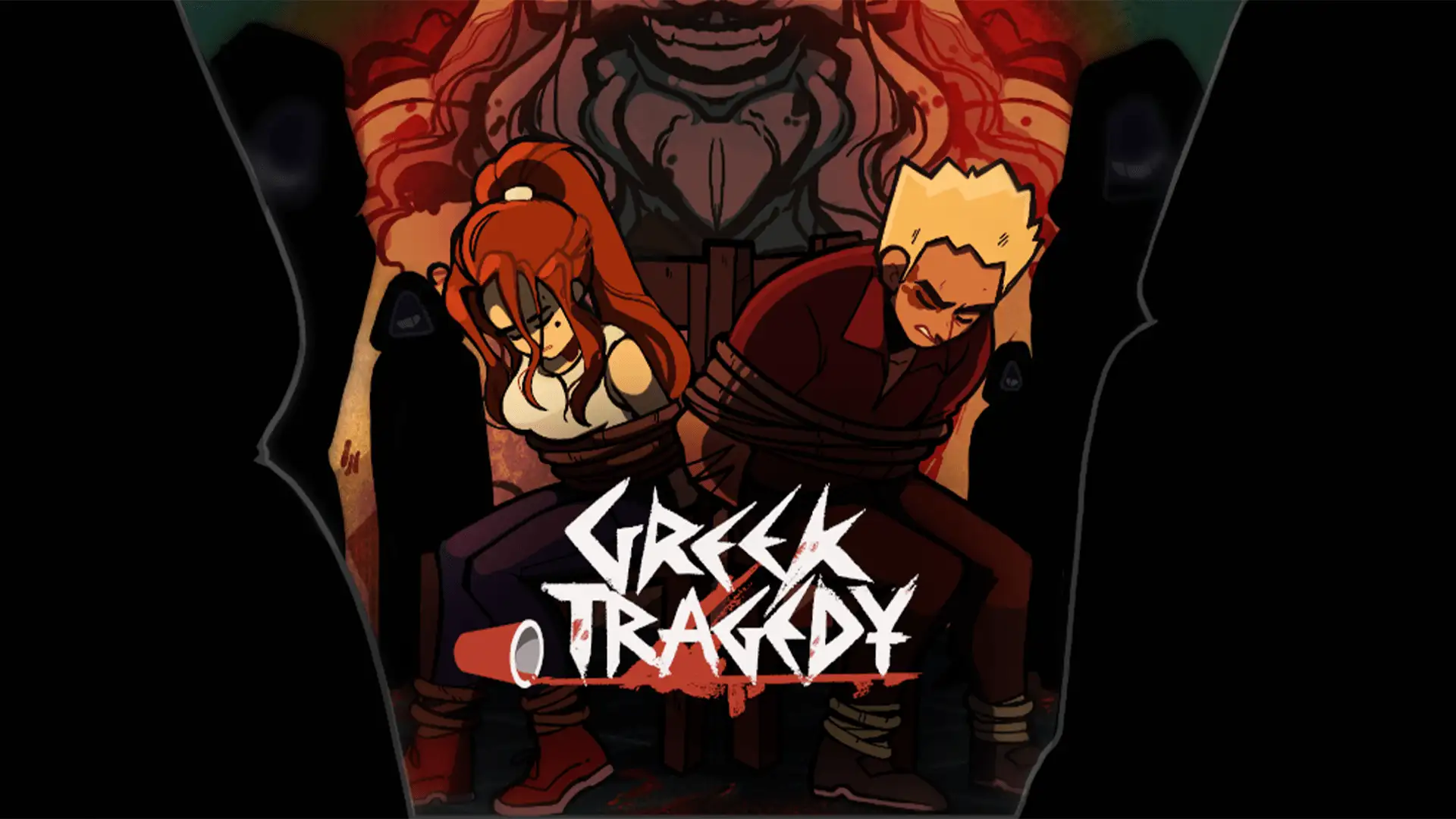
Greek Tragedy is another Halloween release: a fixed-camera PSX horror game that kind of slipped under the radar. Amidst the release of absolute classics this month – Tormented Souls 2, Flesh Made Fear, and Echoes of the Living – it didn’t really get much notice. Well, now that I have finished it (with 3 of the endings), I can’t really say it is competitive with these other titles – especially not as a survival horror game. It certainly shares some of the hallmark traits of the genre; there are fixed cameras, puzzles, and a sense of vulnerability. But it also subverts so many others, to a point where I don’t even know how to classify it. No map, no inventory management, shoddy combat, linear level design, and an absolutely bizarre plot. The combat is somewhat similar to the developer selewi’s games – which DO feel like survival horror despite only having a singular unbeatable stalker enemy. Here, you only have a taser gun that merely momentarily pauses the hooded enemies that relentlessly chase you. This flimsy combat system makes the enemies feel more like a nuisance than intimidating. The real gameplay here is the puzzles, but unfortunately they are a pretty mixed bag. There are a few that were interesting and clever, but there are many others that are either too simple, bizarrely constructed (in a bad way), or just slightly glorified keys. The overall atmosphere is also a mixed bag; while the art style itself is quite charming, the actual content of the college campus, the characters, the vague fraternity/cult story – I just don’t really understand what the atmosphere is supposed to be. The game took about 2 hours to finish, and it left me feeling a bit… empty. I don’t really understand what the vision was for the developer, on both a mechanical gameplay level or the content and story. Some puzzle fans may enjoy moments of the game, but I really cannot recommend it for classic survival horror fans. Greek Tragedy is available for Steam, Xbox, PlayStation and Nintendo Switch
Tormented Souls 2 – Review
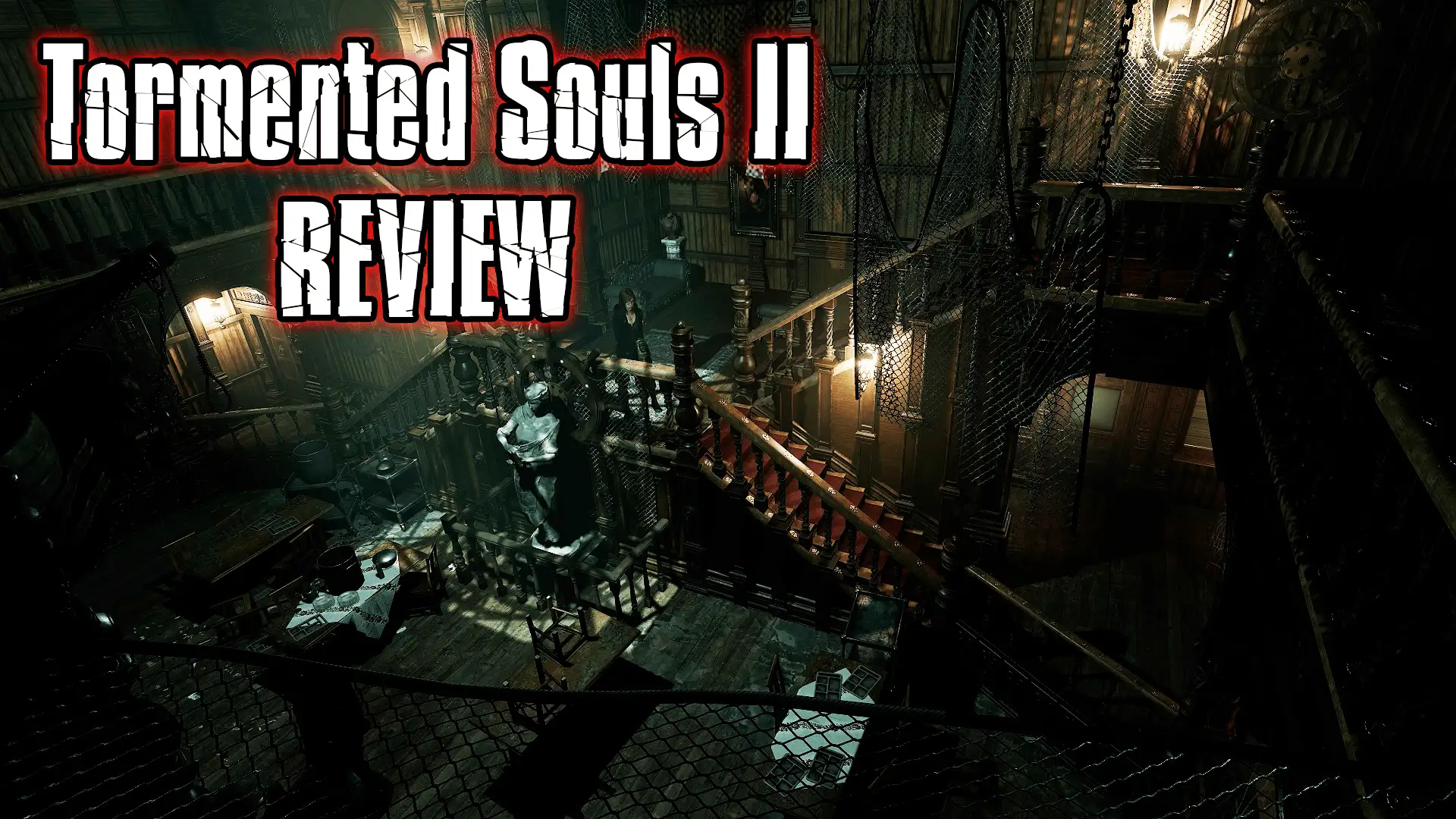
Disclaimer: I received a free review key for Tormented Souls 2 from the publisher. This does not affect my opinions, all thoughts and impressions in this review are my own. The Chilean development team Dual Effect have a deep understanding of the survival horror genre. In fact, I wouldn’t be surprised if they spent half their time developing Tormented Souls 2 and the other half reverse-engineering the code of classic survival horrors to understand what truly makes them work. It is easy to label Tormented Souls 2 as just another Residet Evil and Silent Hill like game, but it is far more than that. There have been plenty of excellent indie survival horror games these past couple of years – Heartworm, Post trauma, Hollowbody, Alisa, The Mute House, The Fear Business – the list goes on and on. While all of these titles are well worth checking out if you’re a fan of the genre, none of them quite capture the rich visual atmosphere and unforgiving gameplay of Resident Evil Remake and Resident Evil Zero quite like Tormented Souls 2. Playing Tormented Souls 2 feels like stepping into a world where Capcom never shifted the genre with Resident Evil 4, a world where the classic survival horror style that peaked with Resident Evil Zero continued to evolve instead of giving way to action horror. It’s a world in which fixed camera angles, tank controls, and carefully rationed resources never went out of fashion. Survival horror in this reality continued to refine its focus on rich atmosphere, sound design, puzzle-solving and a sense of vulnerability – instead of transforming into years of fast-paced action horror, quick-time events and mandatory enemies that drop resources. Dual Effect lean into that vision completely. The game invites you to slow down, to absorb every tiny detail and search every room for any scrap of ammo or health you can find. The environments feel like cut content from an unreleased Resident Evil spin-off, with just as much depth – if not more. They are so detailed that they make you want to take your time in every room, simply to soak in the atmosphere. Playing Tormented Souls 2 reminds me what made the genre special in the first place: the constant tension between curiosity and fear, the satisfaction of solving a puzzle, and the constant fear that an enemy might be just around the corner. Never compromise. Not even in the face of Armageddon It should go without saying, but everything has remained as it was in the original game. For many developers, there is a temptation to “fix” the biggest complaints users had with the first title. I am very happy to report that Dual Effect did not cave to this pressure, nor did they seek to cash in by appealing to a wider audience by making the game easier or more “user-friendly”. They set out to deliver a true survival horror experience, and they stayed the course. Health is a resourceAmmo is a resource Saving is a resource I can’t overstate how important it is that these mechanics remain untouched. The whole time I was playing, I found myself asking questions like: “Should I save now or wait a little longer? Could I run past these enemies and save these shotgun bullets for the boss? Should I heal now or wait for one more hit?” This kind of decision-making simply doesn’t occur in action-horror games like Dead Space or Resident Evil 4. and it creates a completely different experience – one I have been searching for since the original Tormented Souls. The combat is a puzzle In true survival horror games, you quickly begin to realize that the combat itself is a puzzle. For example, when I reached the first boss in the Convent (the game’s opening area), I only had two shotgun bullets, one healing item, and a few nails. I quickly realised that I did not possess the resources required to defeat the boss unless I used the hammer (which we can confirm – is possible!). This meant I had to load an older save and run past a bunch of enemies in order to solve the “puzzle” of reaching the boss with more health and ammo. Darkness / Lighter One of the most unique and important “enemies” in the series is darkness itself. If you stand too long in any shadowy areas, you will die instantly. The only way to counter this is by using a dimly lit lighter. But here’s the dilemma: when you’re holding the lighter, you can’t use your weapons or defend yourself in any way – all you can do is run. This leads to some of the most tense enemy encounters I’ve experienced in any horror game, where you have to run and find a candelabra offering small islands of safety to fight from. Survival horror has always been about playing as a vulnerable character who can barely defend themselves, and I can’t think of another series that commits to that vulnerability quite like Tormented Souls. Taking away your ability to fight in the darkness makes these games truly unique. Camera angles Can I just take a moment to appreciate the camera work in Tormented Souls 2? This kind of detail often goes underappreciated, but it deserves recognition. Take this example in the video below – the way the camera snakes through narrow corridors and then follows you seamlessly down the elevator feels almost like the developers are showing off. Achieving that sense of fluid motion and atmosphere takes real precision, and throughout the entire game the camerawork is consistently excellent. Problems / bugs For our review, myself and Pixel Crypt played an early build of the game, and it’s important that we remain fair by mentioning a few bugs we encountered. The tank controls occasionally stick when entering or exiting menus (although the modern controls are unaffected). We also experienced a few crashes, although it’s difficult to say whether these were caused by hardware issues or software bugs. In a
Fragile Reflection – Review
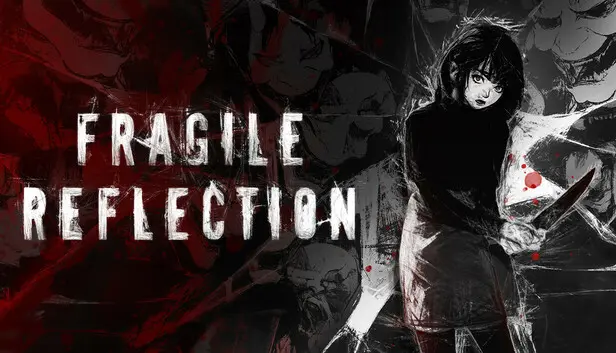
Definitely one of the best survival horror games of the year, despite its obvious flaws. At its core Fragile Reflection feels like Silent Hill f – PS1 edition. It takes place in a Japan-like world, as you explore a village, a sanitarium, mines, and a dream-like otherworld. It is super inspired by Silent Hill 1 and 2, just with modern over the shoulder camera and controls. The music and voice acting are peak, so authentically PSX. The atmosphere and enemy designs are a little janky but also fantastic. The biggest drawback lies in the technical execution. Animations, hitboxes, and controls can feel clunky, sometimes resembling something held together with duct tape. Character movement and animations in particular look like they came from a first-year animation project. But for me – it is not breaking the magic of the game literally AT ALL. And this is coming from someone who noticed the jank in the demo and had extremely low expectations for the full game. Overall, this game is far more absorbing and charming than I expected. It feels very authentic and nails the atmosphere and gameplay. You will know if you are the type of player that can tolerate a bit of jank in exchange for tons of charm and classic survival horror magic. If not, don’t buy. If yes, buy it immediately. Fragile Refection is avalible now on Steam: https://store.steampowered.com/app/3088670/Fragile_Reflection/
Heartworm: Review
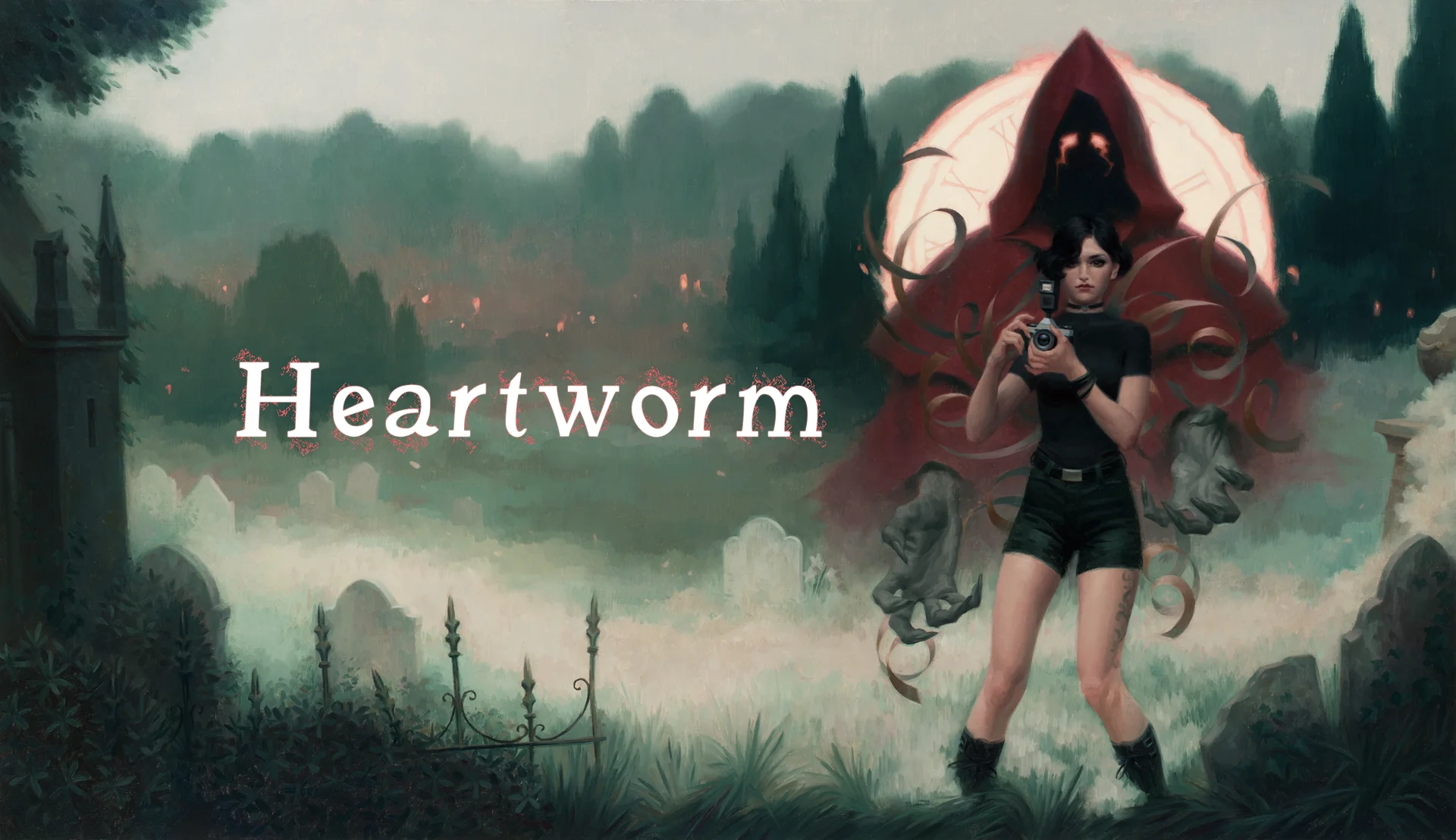
Disclaimer: I received a free review key for Heartworm from the publisher. This does not affect my opinions — all thoughts and impressions in this review are my own. Heartworm isn’t just an indie survival horror game, it’s a deeply personal work, built from the streets, buildings, and small details of Vincent Adinolfi’s own life. It’s rare to see something so steeped in personal history, where every location feels lifted straight from a lived memory. The result is an experience where the environments feel authentic. You’re not wandering through generic level design, you’re navigating spaces that have been lived in, remembered, and reimagined, making Heartworm all the more immersive and rewarding to explore. I was reminded of Hollowbody, which also features a stretch of suburban streets inspired by the developer Nate’s own background in the UK. But the streets there feel distant, abandoned, unreachable, partly because you can only pass by the houses, never step inside. Compared to Heartworm’s intimate spaces, it’s a colder kind of personal. Another source of Heartworm’s warmth comes from its protagonist, Sam, voiced by M in their very first voice acting role. The game is filled with monologues that breathe life into Sam, offering not just exposition but a direct line into her thoughts and emotions. They’re both well written and beautifully delivered, authentic, intimate, and free from the kind of cheesy dialogue that made Resident Evil 1 so charmingly clunky. Gameplay & Variety At the start of the game, you’re given a welcome set of options: graphics can be retro (pixelated) or modern; movement can be tank-style (player-relative) or modern; and aiming can be tank-style (camera-relative) or modern (over-the-shoulder). It’s a smart touch that caters to a wide range of players, as tank controls can be quite divisive. When I played the demo, I opted for tank movement with modern aiming, but found the switch from fixed camera angles to an over-the-shoulder view a little disorientating, it took me some time to get my bearings. For the full game, I switched to both tank movement and tank aiming, and I’m glad I did: it made the combat feel far closer to classic Resident Evil games. Environments Survival horror locations are traditionally dark, grimy, and designed to make you feel uneasy. But Heartworm took one look at that and said, ‘Nah, we’re going to be beautiful.’ I don’t think I’ve ever played a more beautiful horror game, some of the environments are so gorgeous, I actually forgot I was playing a horror game. Before it’s release, I interviewed Michael Jentsch about the enviroments in Heartworm. I learned a lot about how the game was made, but Michael stayed very quiet about some of its best areas — and I’m glad he did. I was genuinely impressed by the scale and variety of the locations. During my playthrough, I explored an abandoned house, a quiet neighborhood, foggy small-town streets, a warehouse, wilderness, a clock tower, a school, a hospital, a subway station, and an office building and that’s just to name a few. With so many locations to explore, it’s no surprise that Heartworm’s development took around five years to complete and required a small team of dedicated developers. Speaking of which, shout out to the small but passionate indie team behind the game: Vincent Adinolfi, Michael Jentsch, Carlos Lizarraga, Leonardo Esteban Montes, Michael “Goba” Tomczak, Jakub Graczyk, Yves Searle, M. Hart, and Suzi Hunter. Enemies & Combat Feedback for Heartworm is generally very positive, but one area where I’ve seen some criticism is the combat and difficulty. Like Hollowbody, most enemies can be easily avoided. However, this didn’t surprise me, as both Hollowbody and Heartworm are influenced by Silent Hill 2, a game where enemies are easy to avoid and combat is not the focus. Earlier this year, I also reviewed Post Trauma, another Silent Hill 2-inspired game, and it actually has far less combat than Heartworm. In fact, I thought the variety and number of enemies in Heartworm was very good. There are the bright, TV-like glowing copies of Sam that use a slow-motion attack, the dogs in the Wilderness, the stone statues that come to life with unique stone attacks, mannequin-style enemies, and licker-type creatures that leap from the ceiling. For an indie game, I was impressed by the enemy variety. There are plans to include an increased difficulty mode, but that’s not something I’m particularly interested in when playing a survival horror game. If I wanted really challenging combat mechanics, I’d play a Souls-like game (and I do quite often!). By the end of my playthrough, I had nine health packs and over 100 camera shots, but I think this is because Heartworm went for the Silent Hill-style approach, with enemies that are easier to avoid. In Resident Evil games, you’re often in narrow corridors, so avoiding enemies isn’t always a practical option. Heartworm, on the other hand, takes place in big, open areas and is mostly set outdoors. I didn’t fight any enemies I didn’t have to, which meant I ended up hoarding resources. Wow, what a mansion! When I first found out about Heartworm, I made the same mistake a lot of people did assuming the gameplay and influences would be similar to Fatal Frame. Having now played the full game, I can safely say the gameplay is nothing like Fatal Frame, especially when you’re using tank controls and tank aiming, as I mentioned earlier. I think when you see a camera being used in a horror game, it’s hard not to make the Fatal Frame connection. However, in Heartworm, the camera feels more like a pistol in Resident Evil. It’s far more accurate to say that Heartworm is influenced by Resident Evil and Silent Hill. The Resident Evil 1 influence is hard to miss the Clocktower section toward the end of the game feels like stepping right into the Spencer Mansion, complete with a replica of one of its staircases and hallways. I love seeing references and Easter
Seek – Survival Horror Game Review

I had very low expectations going into Seek. There was barely any press leading up to it, and when it popped up as a recent release, I was pretty ambivalent about its art style. I assumed it would just be another RPG Maker game masquerading as survival horror, with its 2D anime isometric art style. But thankfully, this is a very well crafted true survival horror game that stands alongside classics such as Signalis, Evil Tonight and Viviette. The game is very understated in its presentation, but effective. You wander the halls of a dimly lit orphanage with only your flashlight to guide the way. Its themes are dark and disturbing, with bits of lore that feel plucked out of a Silent Hill game. The sound design really delves deep into the psychological horror aspect as well. The gameplay is a nearly perfect mix of Silent Hill and Resident Evil– with the ambience of the former and the snappy exploration of the latter. The map is particularly impressive as it marks every little interactive element you find in great detail. You spend your time unlocking doors, solving puzzles, and deciding whether to use your bullets or save them. It has limited inventory/item boxes as well and well-paced backtracking – and even multiple endings! It took me about 8 hours of in-game time to finally reach the end, and for only $6 it’s one of the better deals I’ve found on Steam. While it’s not the most original or richly detailed game, it absolutely nails all the fundamentals of what survival horror fans look for. As this seems to be the developer’s first published game, I am excited to see what they pull off for their sophomore effort If you’re a fan 2D survival horror games Seek is absolutely worth checking out. You can grab it on Steam for just a few dollars, and if you want to keep up with the developer’s future projects, follow cloud_li13.
Post Trauma – Review
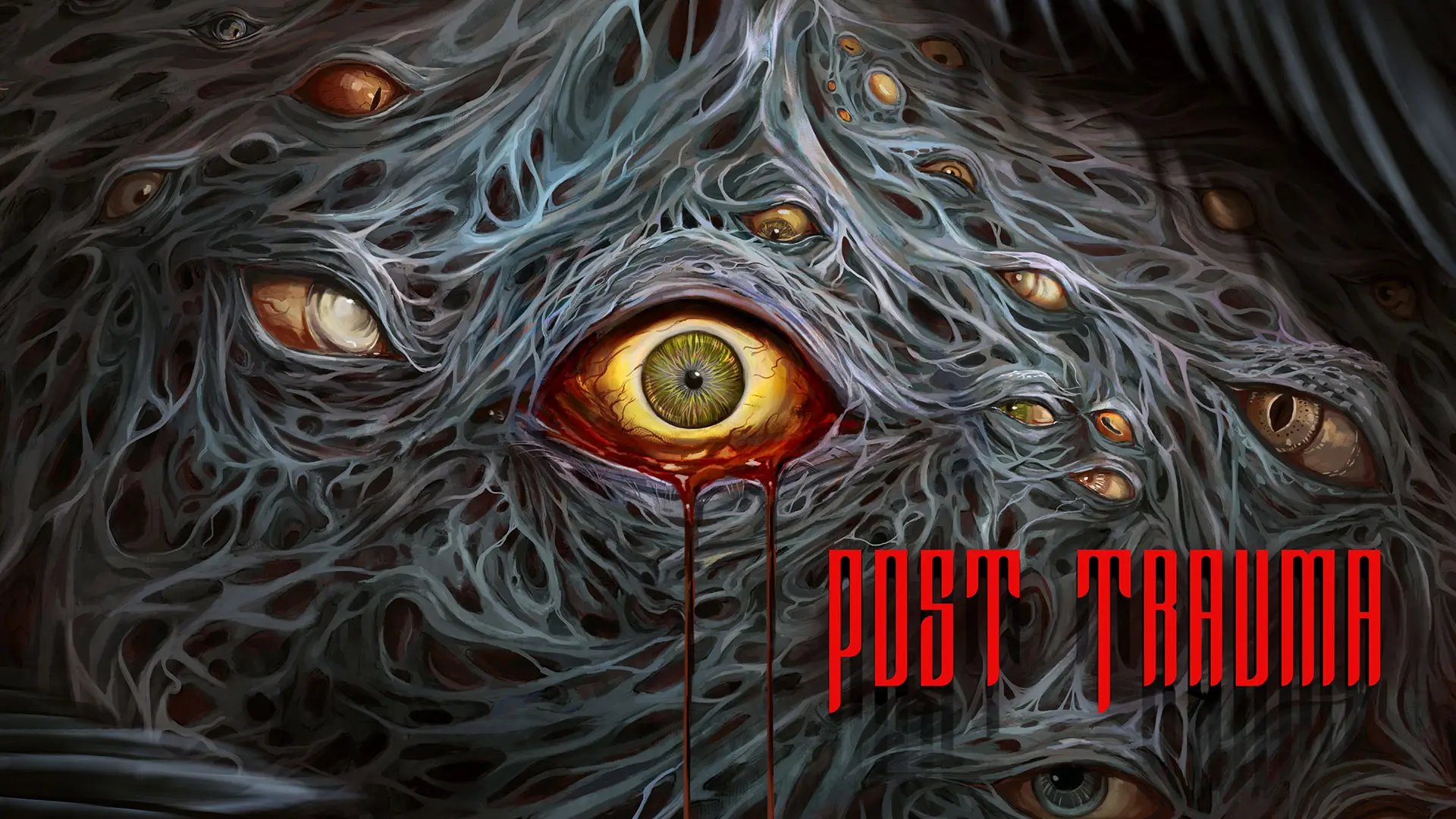
Disclaimer: We were fortunate to gain early access to Post Trauma. The impressions shared in this article are based on that pre-release version. “Not the Next Silent Hill” Post Trauma is a modern indie survival horror game that wears its influences proudly on its sleeve. With fixed camera angles, challenging puzzles, limited combat, and classic save rooms complete with storage chests. It captures the feel of late-’90s horror classics while leveraging the power of Unreal Engine 5 to deliver realistic visuals that heighten the tension and bring its surreal world to life. The game began as a solo development project before gradually expanding to a small team of three to five people at different stages. What this team has accomplished with limited resources is genuinely impressive, much like the spirit of a survival horror game itself. Roberto Serra Gascón, the creator of Post Trauma, posted on Steam, saying, “Some people have seen the trailers and commented, “Post Trauma is the next Silent Hill!”, but let me tell you, it is not… we are aware of the limitations of our game and I hope our players are too.” While this statement helps manage expectations, I think the team is being incredibly modest. The atmosphere in Post Trauma is so well crafted that, at times particularly in some of the environments, it felt on par with, if not better than, the Silent Hill 2 remake. That’s remarkable when you consider the size and resources of the team behind it. While Post Trauma may not match the scale of a modern Silent Hill it shares a similar design philosophy with the recently released Hollowbody, another indie horror title inspired by Silent Hill 2. Both games prioritize atmosphere, puzzles, and psychological tension over combat, staying true to the roots of classic survival horror. That said, Post Trauma offers a longer, more expansive experience, giving its world more time to breathe and unfold. The Environment Is the Clue You start the game locked on a train, and the only way to escape is by solving a puzzle. At first, I thought this was a questionable design choice, but in hindsight, it’s actually the perfect introduction. It immediately sets the tone, Post Trauma is a puzzle focused experience, not a combat heavy one. The best advice I can give going into this game is to pay close attention to your surroundings. Don’t be afraid to use your phone camera to snap photos and take notes of anything that stands out. Clues aren’t spoon-fed to you; they’re often hidden in the environment and conveyed through visual storytelling and imagery, rather than text. That took a bit of adjustment for me, as I’m used to more text heavy clues, which I usually don’t enjoy. So this more visual, interpretive approach was a refreshing change. Surreal Atmosphere The atmosphere in Post Trauma is brilliant — from the moment you step off the train, it’s clear that a huge amount of care went into the environment and set design. One of the game’s greatest strengths is its surreal, dreamlike tone. From haunting enemies and unsettling mannequins to corridors that feel like they’ve slipped out of a fever dream, the world of Post Trauma is deliberately disorienting and deeply immersive. A large part of that comes from the vision of Pau Pujadas, who joined the team as concept artist and art director shortly after the studio partnered with Raw Fury. Pau took the surreal ideas at the heart of the game and dialed them up dramatically, creating bizarre, beautiful concept art that shaped its distinct, otherworldly identity. And it’s not just concept art — Post Trauma‘s 3D models deliver visual moments that rival big-budget AAA titles. Though Pau’s background is in 2D, he quickly adapted to 3D sculpting, crafting many of the game’s most memorable organic designs. Thanks to Unreal Engine 5’s Nanite technology, those surreal sculptures were brought directly into the game world in stunning detail. An Unlikely Protagonist I know I’ve already said this, but it’s worth emphasising, this is not a combat heavy game. If you’re looking for intense action, you’re in the wrong genre. In Post Trauma, not every battle needs to be fought or won, sometimes, running is just as valid as fighting. That’s true of most classic survival horror games, and it holds true here. Not only is combat minimal in Post Trauma, but movement is also deliberately sluggish, and that’s very much a design choice. Without giving too much away, Roman isn’t the only playable character, and one of the others moves with a noticeably smoother, almost gliding motion by comparison. I’m not the first to point this out, but Roman is a refreshingly unconventional survival horror protagonist. He’s just an ordinary man, not a fighter, and if he runs for too long, he gets winded and has to stop to catch his breath. Honestly, I can relate. A vulnerable character is a core element of the genre, and it’s nice to see a break from the usual “young girl” trope. Interestingly, the original concept for Post Trauma did feature a young female lead, but when Epic released their digital human creation tools, the team pivoted to Roman instead. Fixed Camera Angles I think it’s important to highlight just how well-executed the camera work is throughout Post Trauma. Above is a short video showcasing some of my favourite moments. It’s not just about where the camera is placed — it’s about how it’s used to enhance the atmosphere and storytelling. For example, as you exit the train at the start of the game, the camera lingers behind, peering out from inside the carriage. In the claustrophobic hospital archives, it tracks you from behind rows of shelves, adding a layer of unease and tension. It’s not just atmospheric — it’s also a smart and practical choice, making it much easier to navigate the tight, cluttered space without getting disoriented. I’ve played other indie horror games with fixed cameras that feel awkward or limiting, but that’s not the case
Pinnacle Point – Playtest
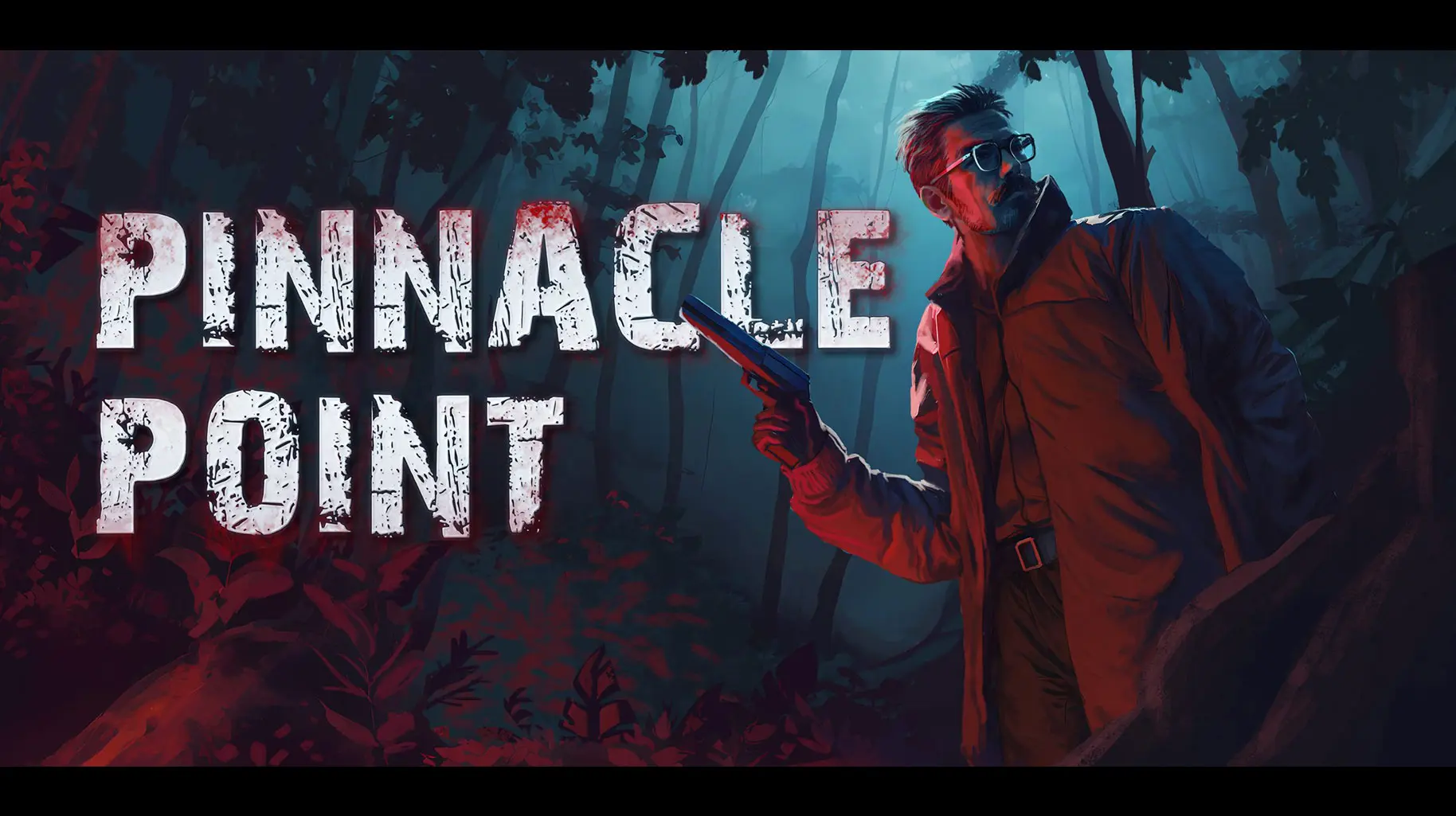
Pinnacle Point is an upcoming survival horror game that blends modern sensibilities with a classic presentation. You play as Aron, a man searching for his brother on an island while solving puzzles and fighting enemies. The recent playtest we had the privilege of previewing shows promise, though it’s not without flaws. However, the developer, (Ready2RunGames), has assured us that player feedback will be incorporated into the upcoming public demo. The game is in third person with an over-the-shoulder camera and free non-tank movement, so it definitely is open to modern players who don’t love the classic style. That said, it still has some very obtuse riddles that even I found to be a bit illogical – getting stuck on multiple times. In each case though it seems to be an issue of missing a crucial clue, which the dev said he would work on. There is also no map (also supposedly to be added), and I just found the enemy design and combat to be pretty underwhelming. Think Alan Wake 1, with a black silhouette enemy that you weaken with a beam of light before shooting it until it dissolves. Still, it definitely shows some potential. The boss fight at the end of the demo was very reminiscent of classic, shoot-the-eyeballs Resident Evil. The set design was eye-catching and there’s a few nice cinematic set pieces. With player feedback, I think it could end up being a great game that is accessible to both retro and modern survival horror fans. You can whishlist Pinnacle Point on Steam, and if you want to keep up with the developer visit Ready2RunGames.com or follow on Twitter/X or Bluesky.
The Third Pig – Review

The Third Pig is a proof-of-concept game that falls into what I’d call the “run-and-hide” style of survival horror. Inspired by The Three Little Pigs, you play as the third pig, the last surviving sibling after Mr. Wolf and his mysterious accomplice kill your brothers. Your role is to escape your own home, which has become a trap, using your wits to solve various puzzles. Drawing from the golden age of the genre, The Third Pig embraces fixed camera angles, tank controls, and a Silent Hill inspired inventory system. Its black-and-white aesthetic isn’t just for style, it cleverly makes key interactive objects stand out. It’s a subtle but effective touch that ensures players never miss a crucial item while still demanding keen observation to solve its puzzles. The game strikes a great balance, challenging but fair, never holding your hand, yet rewarding those who pay attention. At first, I thought the wolf-stalker dynamic was inspired by Clock Tower or Haunting Ground, but it turns out that PopsArcade was actually influenced by Tomás Esconjaureguy, the developer behind Cannibal Abduction. That said, this mechanic isn’t quite as fleshed out as in the games I initially mentioned. Escaping from Mr. Wolf is as simple as hiding in an outhouse or the upstairs attic. Strangely, he won’t huff, puff, or blow the outhouse down instead, after a few seconds, he simply loses interest and walks away. In some respects, this makes him feel less like a true threat. However, if he traps you in a corner, escaping becomes nearly impossible, effectively turning it into an instant death scenario that forces you to restart from the beginning. With an estimated playtime of 30-60 minutes, The Third Pig is a short but effective way for the developer to cut their teeth. I really enjoyed the voice acting at the beginning, and there’s even a cameo from eurothug4000, which I wasn’t expecting but absolutely loved. I’d love to hear more of them in a sequel. Now that the groundwork is laid, I’m keen to see what they do next. Keep an eye on them for future updates: @popsarcade.bsky.social If anyone wants a copy of The Third Pig I will personally buy it for you (it’s free): https://store.steampowered.com/app/3316090/The_Third_Pig/
Mansion of the Dead – Review
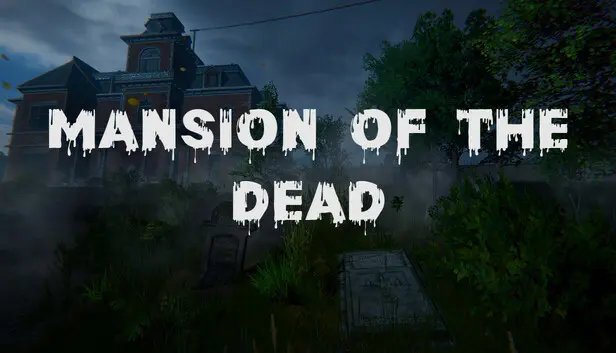
I went into this game with extremely low expectations. The cheap price tag, unimaginative capsule art, and basic screenshots seemed a bit uninspired. But what I found was a super fun 90 minute survival horror thrill ride that balances cheesy jumpscares with genuine terror and clever puzzles as well. You start off in a pitch black room, confusingly stumbling around until you find a table lamp. You’re then introduced through letters to the main villain (hilariously named Will Smith). Then begins the main gameplay loop – look for key-like items, discover some bizarre set piece that will scare you or make you laugh, and keep descending deeper into the mansion. There is actually some very brief but surprisingly good combat, and the puzzles continuously get more interesting as well. And just as you’re starting to fall in love with the game – it’s over. But for $2-3, it was absolutely worth it. If you’re a fan of bite-sized survival horror experiences, Mansion of the Dead is absolutely worth checking out. You can grab it on Steam for just a few dollars, and if you want to keep up with the developer’s future projects, follow Caicai Studio on X.
Somnifuge – Review
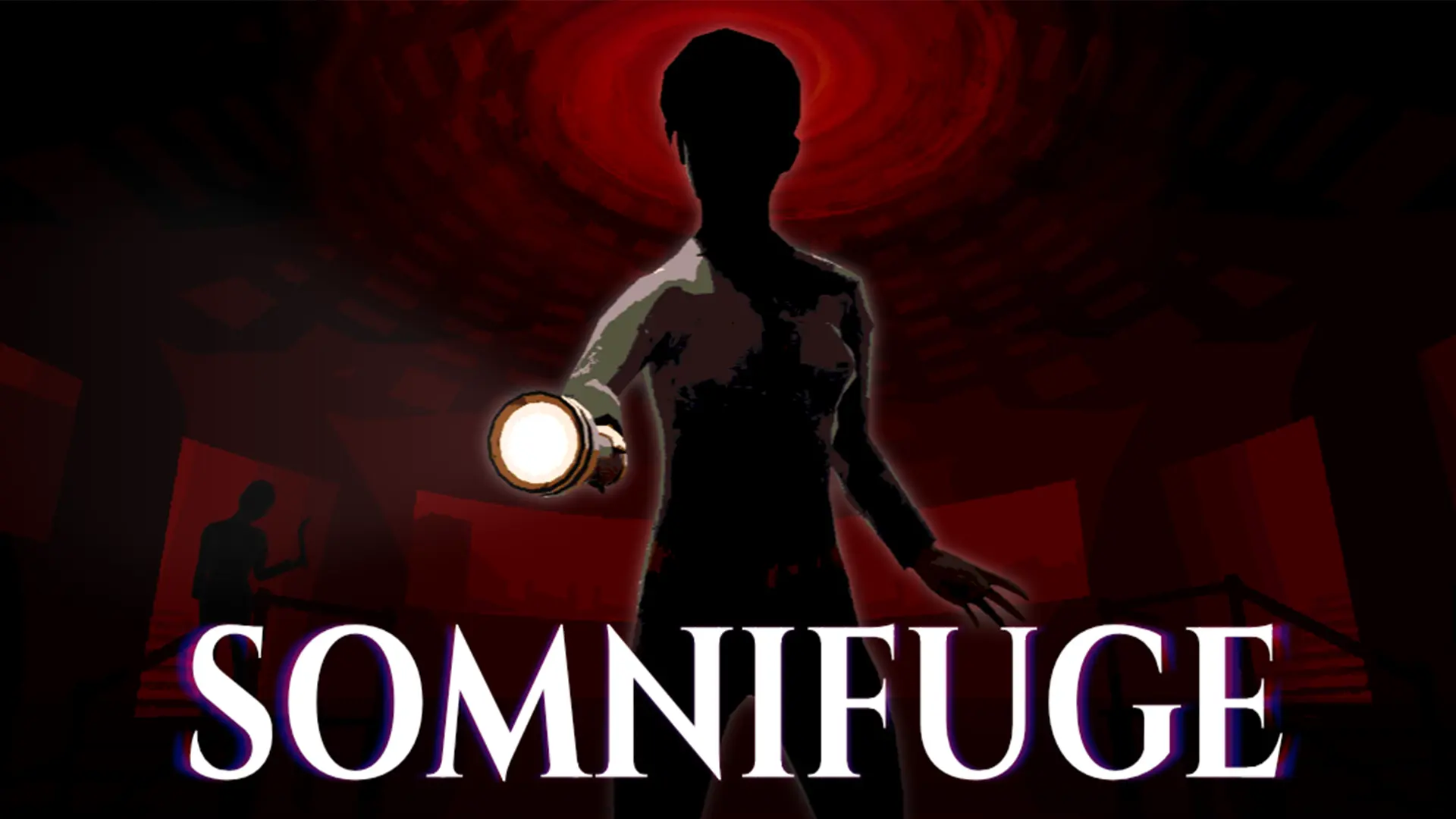
Somnifuge is a unique, gritty, PSX inspired horror game. It’s not exactly survival horror, more of a psychological horror game with lots of puzzles, but it does have a survival horror “vibe”. I was very excited for it, having played the demo only a week prior. It immediately reminded me of The Tartarus Key, another game that feels like survival horror despite being purely puzzle-based. To an extent that’s what I got, though I’d say it’s a little rougher around the edges and WAY more “out there”. The puzzles are good but a bit of a mixed bag, generally challenging and fun, though some feel a little clunky. There’s no map, so navigating the mansion and its ever-changing environments can be disorienting (and occasionally tedious). Often, this feels intentional – the game definitely loves to disorient you and catch you off guard. More often than not it was well designed, and definitely interesting. The game has a dreamlike, surreal logic to it, it kind of just goes wherever it wants. I had no clue what anything meant or what the context is, but it was certainly entertaining. If I had my way, I would’ve loved a bit more focus on puzzles (sometimes it felt a bit walking sim-esque), some polish and refinement, and a map. But it’s a unique game and if you’re into dream-like psychological horror puzzle games DRIPPING in 90’s survival horror aesthetic – don’t miss this one. Interested in trying Somnifuge? Buy or wishlist it on Steam here: https://store.steampowered.com/app/2957970/SOMNIFUGE/
Zero Protocol – Review

Zero Protocol is a retro FPS survival horror game taking place in a scientific facility, where you play as an amnesiac newly-hired head of security – trying to piece together what happened amidst a sudden emergency lockdown. In its short and sweet 6 hour runtime, it manages to keep its simple gameplay loop interesting and offers a unique take on the genre. It is definitely a classic survival horror game, but in a first person perspective. Slowly, you make your way from floor to floor, solving puzzles to unlock doors while killing your infected colleagues. It has a nice and blocky pixelated 3D look, which is very tastefully done. The map is great, marking details such as locked doors and allowing you to place limitless custom markers. The puzzles are very creative and manage to challenge, despite basically being a rinse and repeat of finding keys to unlock doors (I actually appreciated the shamelessness). The story too is simple but intriguing. When I originally tried the 1.0 release, combat was nearly impossible and I ended up soft locked with no way to proceed. In the newest update, I actually had too many resources… so maybe there needs to be a happy medium. Regardless, the enemy encounters have sufficient variety and require strategic bullet use and quick reflexes depending on the enemy type. Overall, it’s just a short and sweet survival horror experience that left me completely satisfied. The game is finished in about 5-6 hours, and I found the simplicity refreshing and a unique take on the genre. It’s not the most ambitious fleshed-out horror game ever (nor is it trying to be), but it’s a very well crafted experience that fans of the genre will appreciate. Interested in trying ZERO PROTOCOL? Buy or wishlist it on Steam here: https://store.steampowered.com/app/2840250/ZERO_PROTOCOL/
Blood Typers – Typing Survival Horror

Blood Typers is a unique, fast-paced typing game that takes a stab at the survival horror genre. It’s really hard to picture what this means without giving it a try, but the execution of this idea really took me by surprise. The moment-to-moment gameplay is shockingly just as intense as the best of the genre. But after playing for a few hours, I realized that it’s aimed at a completely different player base than myself, given its focus on multiplayer and randomized replayability. Does the game truly deserve the survival horror label? Yes and no. It does have limited saves (really more like checkpoints), inventory management, tense combat, keys and backtracking, a map, and even zombies! But what it doesn’t have ended up slowly but surely eroding my enjoyment. There are no puzzles, barely any lore or story, and worst of all… the level design is procedurally generated. I was having a much better time until I realized the last point. I had gotten killed, reloaded the game, looked around, and noticed that the map had completely changed. This is obviously implemented for fans of the roguelite genre, as you can do as many runs as you want and never totally learn the map. But for me, it ends up just making the whole game feel pointless. I want to know that my experience is hand crafted by a human, otherwise I just don’t see the point (much like viewing AI generated artwork). So ultimately, I did have my fun with its well executed typing gameplay mechanic. Its extremely unique blend of typing with survival horror is one-of-a-kind. But once I try a roguelite game, it’s only a matter of time before I lose all interest. Interested in trying Blood Typers? Buy or wishlist it on Steam here: https://store.steampowered.com/app/2790330/Blood_Typers/
The Mute House – Review
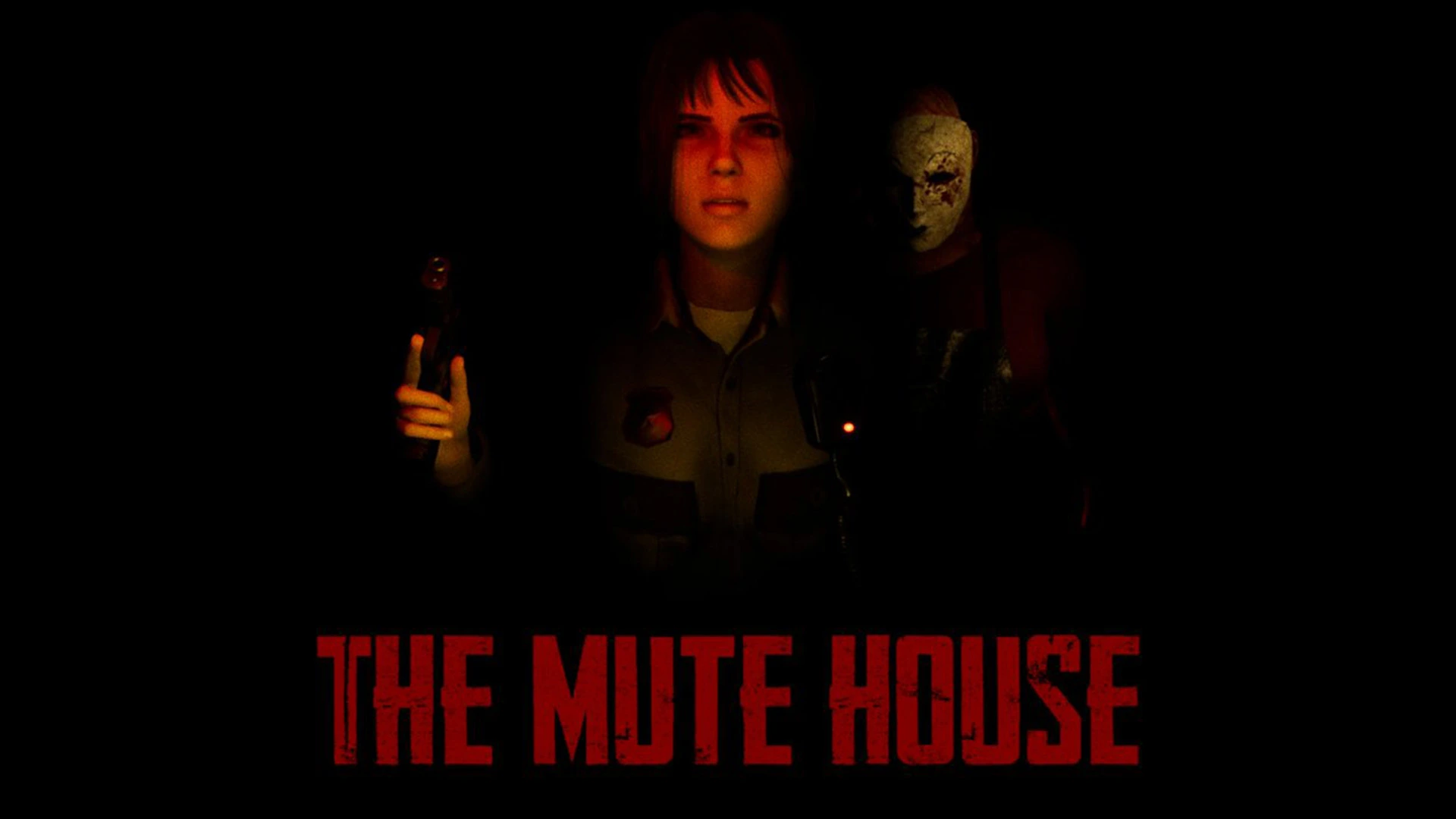
Disclaimer: We were fortunate to gain early access to The Mute House. The impressions shared in this article are based on that pre-release version. The Mute House is a brand new fixed-camera third person classic survival horror game from solo developer December Blues Games. It is an impressive debut effort, with rich detailed graphics akin to games like Tormented Souls, and some seriously terrifying moments. But what makes the game stand out most is its hauntingly somber tone and some very challenging (but fair) puzzles. What immediately struck me – and only continued to impress – is the game’s atmosphere. It is legitimately terrifying at certain moments, and there’s a noticeable shift in energy as you progress through the game. Its use of shadows often let my imagination run wild, spurred on by some seriously creepy sound work that I can only compare to the recent Silent Hill 2 remake. The game takes its horror very seriously, and you won’t find much Resident Evil b-movie corniness here. The gameplay itself is somewhat of a mixed bag. At times it can feel a little bit walking sim-esque, similar to last year’s Hollowbody. There’s lots of non-interactive square footage, and a number of rooms that offer only a bit of ammo or an optional note. But when the game does have a puzzle, it’s almost always expertly crafted. If you remember the piano puzzle in Silent Hill 1– this has its own rendition, but is actually logical and a blast to figure out. I do have some gripes with it though. In the pre-release state, it had no map and no notes – you’re truly on your own. If you have a photographic memory then you’re in luck, but for us plebeians – I encourage you to take detailed notes and even draw your own map like the good old days. A significant drawback is that the item storage boxes are not interconnected, forcing you to constantly remember where you’ve placed each item. I have a suspicion when more players offer feedback, this will get addressed. Aside from those minor gripes, it’s a really impressive debut from the developer. The tank controls are snappy, the combat is simple but effective, and the core exploration gameplay is top notch. If it was just a little bit denser in the gameplay department, and addressed the map/inventory issues – I could easily see this being in my notes for a GOTY contender. But without a doubt, it’s definitely the best survival horror game I’ve played this year and I’m eager for what’s next from the developer. Use this link to buy or wishlist The Mute House! https://store.steampowered.com/app/2219890/THE_MUTE_HOUSE/
Dead of Darkness – Review

Disclaimer: We were fortunate to gain early access to Dead of Darkness. The impressions shared in this article are based on that pre-release version. Dead of Darkness is the latest addition to the extremely slim selection of 2D survival horror games, joining ranks with Evil Tonight, Viviette and Lone Survivor. It follows the story of Miles Windham, an ex-cop floating through life after the mysterious death of his wife and daughter. He gets a letter in the mail inviting him to a clinic on Velvet Island, which is the ominous setting for the entire game. The game is massive, my playthrough clocked in at 23 hours. Along the journey, you will be exploring a mansion, hospital, houses, underground tunnels and a tower of traps. You know the drill: solve puzzles, dodge enemies and unlock shortcuts. The level design is pretty good, but it’s definitely a bit padded. Many rooms only have a single health item and the decorum is often just repeated sprites and descriptions you’ve seen a few times before. The puzzles are pretty simple Resident Evil “use X item on X” style. There is a unique system in the way the game handles clues. When you encounter helpful information in a note, it gets stored as a clue in the inventory, which is a separate tab from the files. What makes it interesting is that clues are used similarly to inventory items – you can combine clues together, use them on items, or use them on the environments. The best puzzles in the game used this system. The game rewards keen observation in other ways too, with optional upgrades and items sprinkled throughout. At the time of playing, there is definitely some roughness to the overall balancing though. On normal difficulty, the first hour is very tough (but fun), but if you play conservatively then you will run out of space in your stash box by the end of the game. This is starkly contrasted by the time spent playing as a second character, where I never had any items and just barely scraped by. Hopefully this will get balanced out better, but it was probably the biggest issue I had. ***Addendum: from what I’ve heard, other players with less experience actually had to drop the difficulty to easy just to survive, so choose your campaign based on your experience level. The writing is graphic, and I liked how unabashedly it would describe (or imply) absolutely horrific scenarios. The voice acting is very professionally done, and the character portraits (especially the body horror ones) were a treat. The pixel artwork though feels pretty basic – it’s about at the level you can see in the trailer throughout. Overall, the game just suffers from some pacing and balancing issues. The long playthrough time doesn’t feel justified by the amount of puzzles or set pieces, it feels bloated and towards the end it drags. If it was refined, worked in with new puzzles, unique decorum in each room, etc. then it would be a pretty satisfying experience. I would have loved way more clue system puzzles- these were great. I had a good time though, especially in some key areas – the mansion, the House of Always, and Graham Memorial Hospital come to mind. These areas show the best the game has to offer with fun strategic combat, clever puzzles, fun weaving level design, and horrific graphic bits of lore. Having played an early build of this 2D survival horror game, I can say it’s shaping up to be an excellent experience. With some patches to refine the rough edges and streamline a few aspects, it has the potential to truly shine. Dead of Darkness will release on the 23rd of January 2025, use this link to buy or wishlist! https://store.steampowered.com/app/2157210/Dead_of_Darkness
The Thing Remastered Exclusive

Disclaimer: We were fortunate to gain early access to an unfinished build of The Thing Remastered. The impressions shared in this article are based on that pre-release version. NightDive Studios has created a reputation for expertly revitalising classic games from the ’90s and early 2000s, titles from an era predating HD graphics, PBR textures, and advanced lighting systems. Their talent for modernizing these experiences makes The Thing (2002) a prime candidate for a remaster. Your squad mates can now only be infected by direct contact with a Thing beast. The heart of The Thing lies in its infection system, a mechanic that captivated fans upon its original release. Naturally, one burning question precedes the remaster’s launch: Are the infections still scripted? I’m happy to confirm that they are not. The remaster eliminates the old scripted infections. Now, squadmates are only infected through direct contact with a Thing beast. Adding another layer of tension, certain NPCs are more susceptible to infection than others, making each encounter unpredictable. This dynamic approach reintroduces the fear and paranoia that defined the original game while enhancing the immersion for a modern audience. The saying goes, “Photography is all about lighting,” but the more I play NightDive’s remasters, the more I believe this is true for gaming too. The flamethrower is an integral part of combat. To take down the big Walkers, you need to burn them when their health is low, meaning you’ll rely on the flamethrower frequently. In this remaster, the Kex Engine enhances the dynamic lighting effects, making the flamethrower’s flames look far better than in the original game. Another significant update in the remaster is the rebalanced difficulty. Late-game sections, in particular, now feature more health and ammo pickups, alleviating much of the frustration players faced in completing the original. While The Thing Remastered retains its horror elements, it’s more accurately described as a squad-based action horror game rather than pure survival horror. Resources are plentiful, and the gameplay leans heavily on action rather than evasion. Unlike traditional survival horror games, where avoiding enemies is key, this title encourages direct confrontation and tactical combat. Don’t let the genre label deter you – this is a classic game inspired by a cult-classic horror movie, and it’s absolutely worth experiencing. If you’re curious to see The Thing Remastered in action, check out the video below. It showcases the game’s updated visuals, dynamic lighting, and intense gameplay, giving you a glimpse of what makes this remaster so special. Whether you’re a fan of the original or discovering it for the first time, the footage will give you a better feel for the atmosphere and improvements NightDive Studios has brought to this cult classic.

